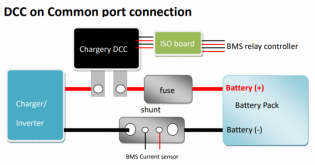we just released new firmware for BMS8T, BMS16T and BMS24T. both main unit version and LCD version is V4.02
the update are as below,
On new version V4.02, new update:
- Optimize current measurement, with 100A shunt, the BMS can detect 0.3A minimum, with 300A shunt, the BMS can detect 0.5A minimum. The AH and WH accuracy is improved at the same time.
- Optimize cell voltage measurement, improve the cell voltage accuracy
- Modify over current protection resume from automatically to by manual.
new manual is as below, more details please check the final page of manual.
New Firmware is here,
https://chargery.com/update.asp
our testing result state clearly the current is very stable and accurate, if curent reading on BMS still have fluctuations, please email me to
jasonwang3a@163.com, i will try my best to fix it, maybe need modify hardware.
new
BMS8P, BMS16P, BMS24P will be with RS485, and CAN communication, the cooling fan will be added, new hardware and new program, continue to balance will be realized, for battery with large capacity difference, large impedance difference and large cell volage difference will be resumed at the shortest time, 1A balancing current will remove 10AH difference within 10 hours.
the cell IR measurement is still an importang tool, it can indicate cell actual difference, it is easy to tell you which cell is bad (lower capacity and higher impedance), and need to exchange.
about parameter setting, don't setup the protection point to the highest or the lowest as descriped in cell/battery datasheet, it is abosulutely maximum or minimum value, and don't reach it abolutely, that is to say, if over it or under it, the cell or battery is dangeous, so it is not suitable in actual using, unless you need test cell/battery actual capacity, because the capacity listed on cell / battery datasheet is tested according these maximum or minimum conditions.
good luck and thanks for support.




